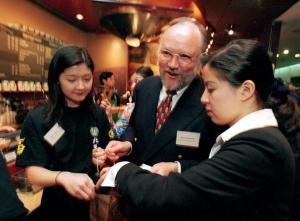
Image: forbes.com
John B. Richards has engaged with various companies where he significantly contributed to their growth and success. At Starbucks Coffee Company, John B. Richards was president of retail in North America then promoted to president of North American operations. He presided over stunning sales growth from $400 million to $2.5 billion on the back of rapid store expansion, which peaked with a new store opening every 18 hours.
Sharing his Starbucks experience, Mr. Richards notes that retail has been coming under threat from technology, namely in the form of the Internet and e-commerce. Yet Starbucks retails a very traditional product, coffee, and has managed to grow and prosper. The company focuses on several service principals, including choosing locations that are both convenient and high traffic, a consideration often overlooked by entrepreneurs.
The retail beverage company also focuses on transaction efficiency and speed as time has become a more precious commodity. The Starbucks Card cut initial transaction time, as swiping it was quicker than making purchases with cash.
Lastly, the company embraced technology, focusing on leveraging the Internet to improve service and create brand loyalty. It introduced online ordering and launched a loyalty program to reward patronage. Thus, in a technology dominated world, there can still be success in retail by focusing primarily on service principles.


